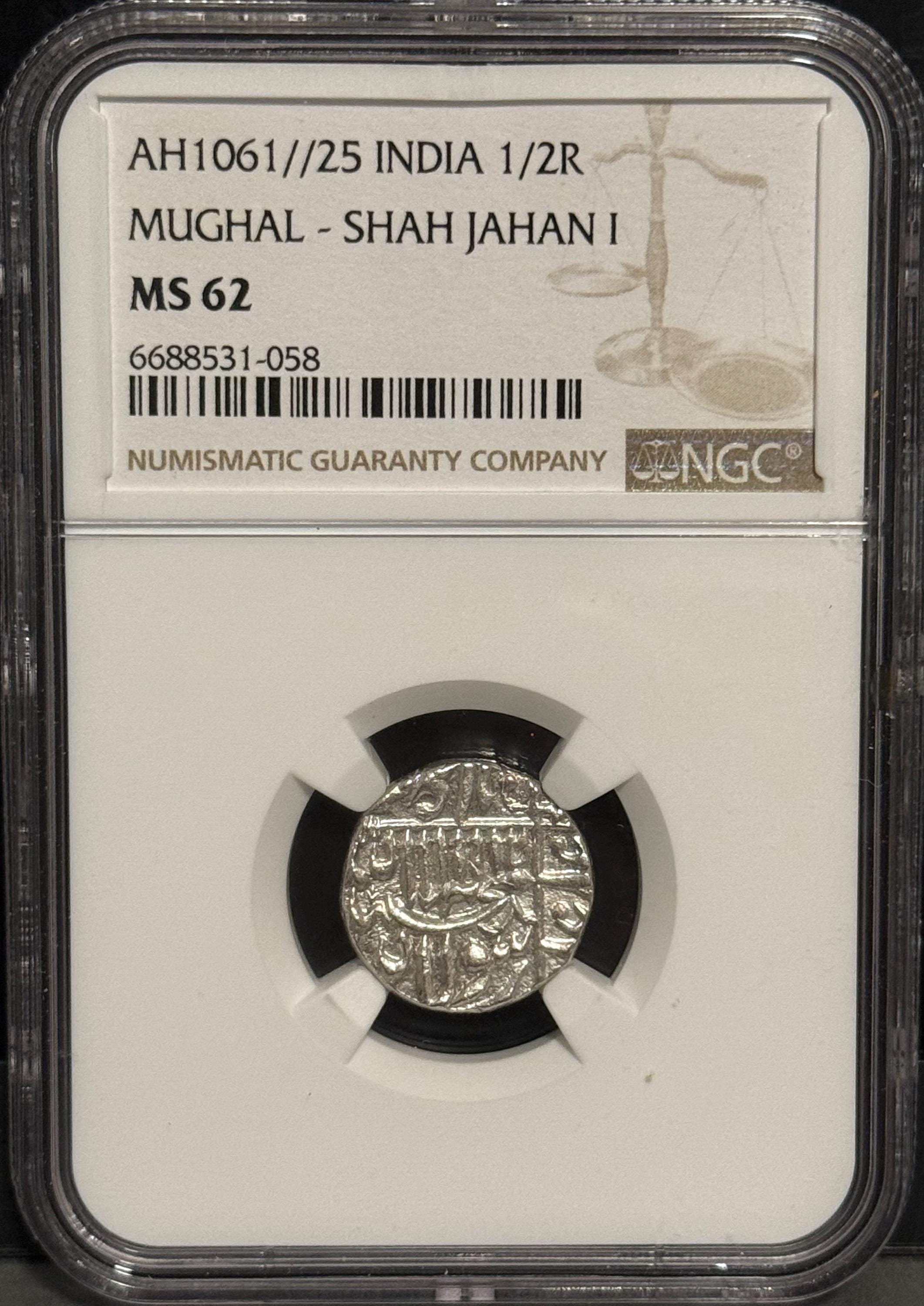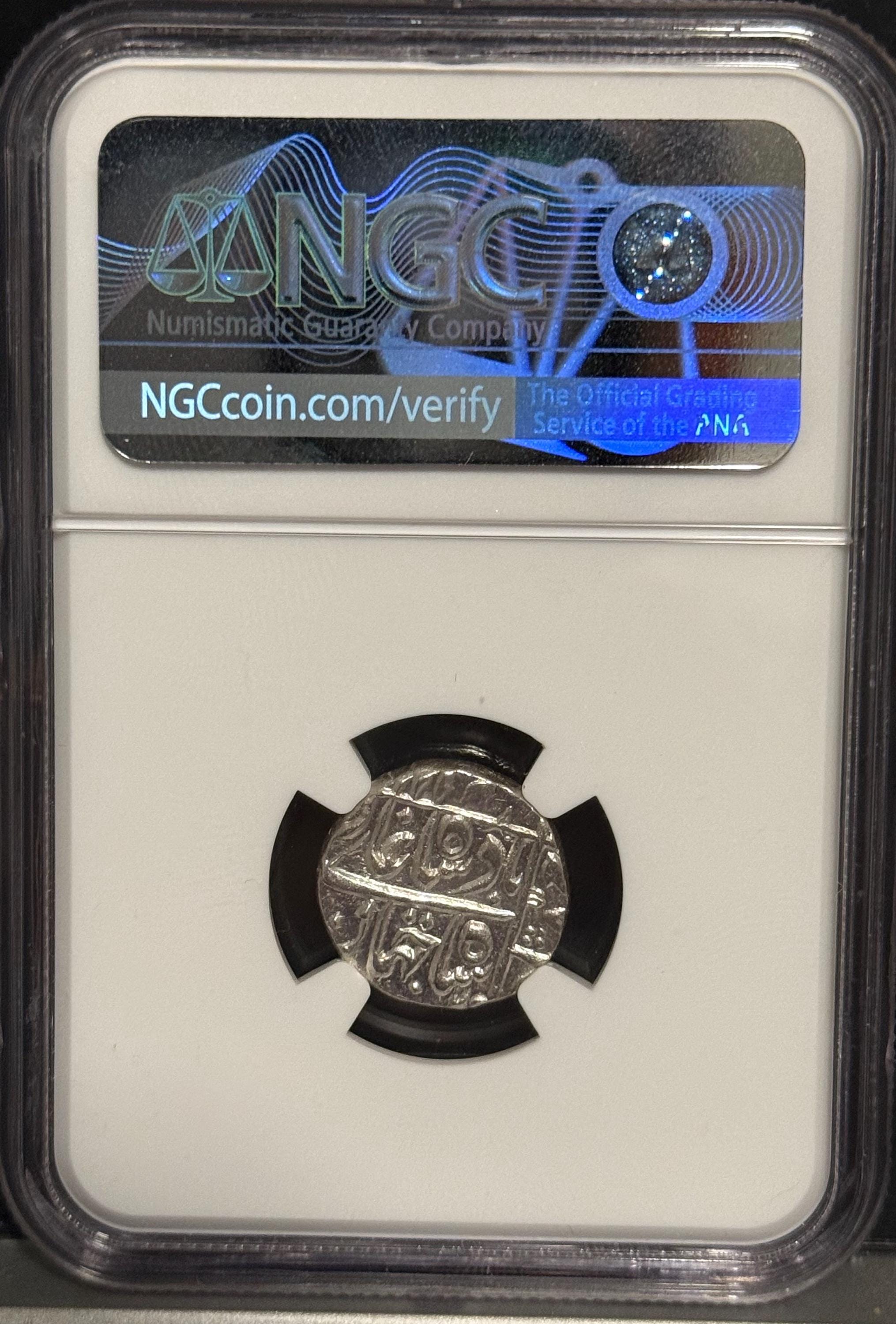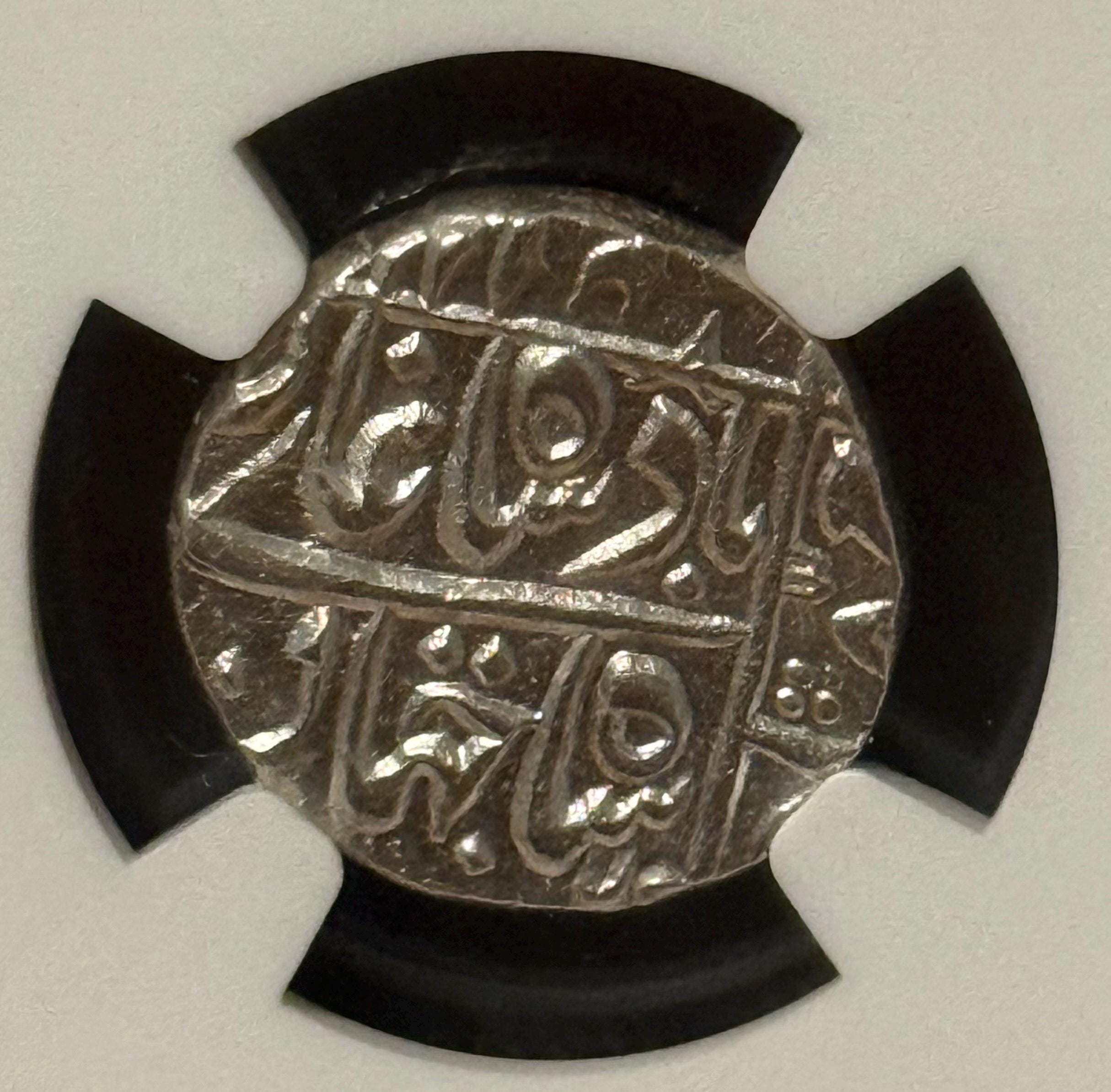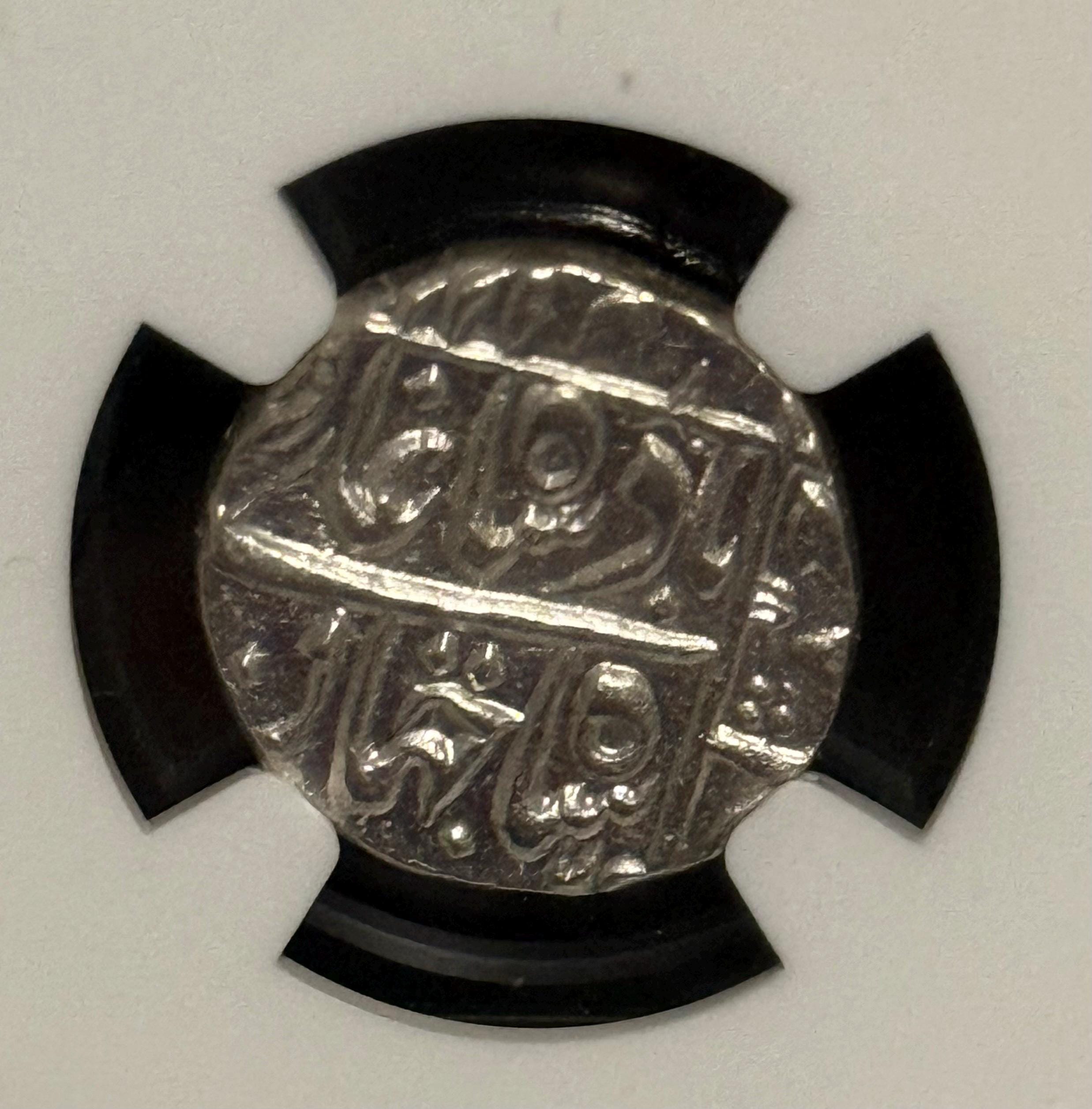AH1061 (1651 AD) India Mughal Empire 1/2 Rupee • Middle Ages World Silver Coin • Emporer Ruler Shah Jahan • Graded Mint State NGC MS62






$174.25 $205.00
This coin, minted in AH 1061 (approximately 1651 AD), represents a half-rupee from the Mughal Empire during the reign of Shah Jahan, one of the most illustrious emperors in Indian history. Shah Jahan is best known for his architectural achievements, particularly the construction of the Taj Mahal, which he built in memory of his beloved wife, Mumtaz Mahal.
The Mughal Empire during Shah Jahan’s rule was marked by a flourishing of art, culture, and architecture, as well as significant administrative and economic developments. The empire reached its zenith in terms of territorial expansion and cultural richness, with Shah Jahan promoting the arts, literature, and religious tolerance.
This particular half-rupee coin showcases intricate designs typical of Mughal coinage, often featuring inscriptions in Persian, which was the court language of the empire. The obverse typically displays the emperor's name and title, while the reverse may feature a floral or geometric pattern, reflecting the artistic sensibilities of the time.
Coins from this era not only served as currency but also acted as a medium for the emperor to assert his authority and communicate his values to the populace. They are valuable historical artifacts that provide insights into the economic conditions, political landscape, and cultural achievements of the Mughal Empire.
The AH 1061 half-rupee stands as a testament to Shah Jahan's legacy, encapsulating a period of remarkable progress and artistic brilliance in Indian history. Collectors and historians prize such coins for their historical significance and the rich narrative they convey about the Mughal dynasty.